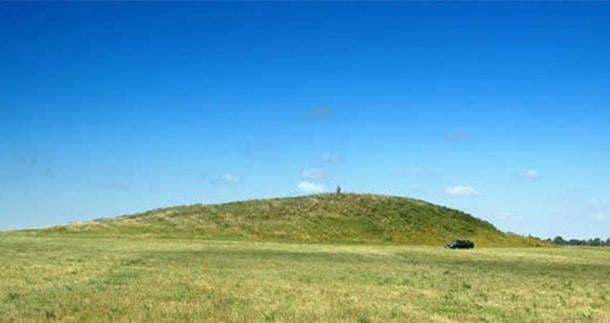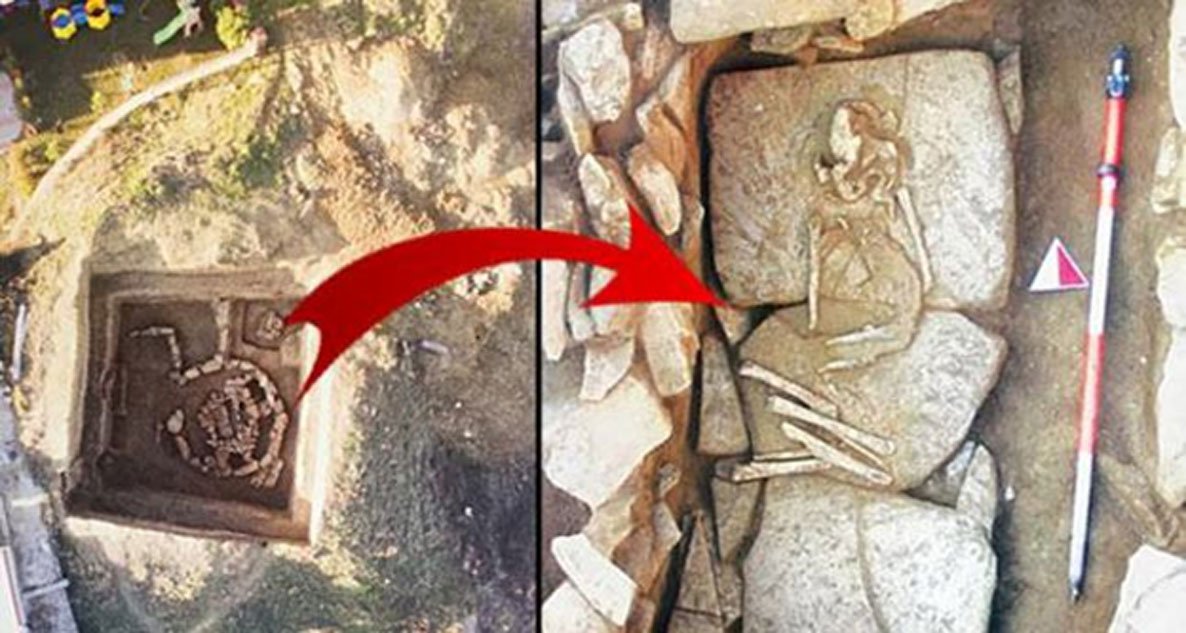5,000-Year-Old Unlooted Tomb of Thracian Warrior is Biggest Find of the Year in Turkey!
The intact tomb of a Thracian warrior dating back some 5,000 years has been excavated in Turkey, the Istanbul Archaeology Museum announced. Experts are calling it the biggest archaeological find so far this year in Turkey—a country with many important archaeological sites.
Hurriyet Daily News says the tumulus was looted. However, looters had tried but failed to dig into the main burial chamber.
The tumulus was likely that of a prominent Bronze Age warrior from northern areas. Researchers assume he was a warrior because they found a spear point in his grave, according to the First Istanbul Board for the Protection of Cultural Artifacts.
Hurriyet Daily News says a kurgan is a burial mound constructed in a circle over a grave in a pit. Kurgan burials often have grave vessels, weapons and one body. “The type of tomb was originally used on the Russian steppes but later spread to eastern, central and northern Europe in the 3rd millennium B.C. The type of grave was holy in Turkic and Altay culture,” the article states.
Professor Mehmet Özdoğan of Istanbul University Department of Archeology told Daily Sabah he has studied such tumuli before, but this discovery is important because it is the oldest one found in Thrace. It’s hoped the tomb will help shed light on historical mysteries about Thrace and help with studies about ancient Istanbul.
Years ago, Özdoğan excavated another Thracian kurgan, from around 1200 BC in the village of Asılbeyli in Kırklareli in eastern Thrace, Daily Sabah says.
“Thrace received migrations from the north. This is a kurgan-style tomb and such tombs exist in my studies, too,” Özdoğan told Hurriyet Daily News. “I know that lots of kurgan tombs have been destroyed in Thrace. We have rescued one of them from the digger. But this tomb is older and is from the Bronze Age. It is a very important discovery. I believe scientific examinations will lead to interesting results.”

Sarmatian Kurgan 4th c. BC, Fillipovka, S.Urals. Source: Wikipedia
The Istanbul Archaeology Museum wants to register the grave as a historical site and place the remains of the warrior on exhibit in the museum.
Kurgans are considered sacred burials in Turkic and Altaic cultures. People were buried in kurgans widely across central Asia and Eastern Europe. The word kurgan is from an unknown Turkic language and in Turkish means “fortress,” says Daily Sabah.
The practice of building kurgans for important people’s burials was done from the Copper Age, through the Bronze, Iron ages and into the Middle Ages, though it was not as popular during later times.
One of the most prominent historical figures buried in a kurgan was Philip II of Macedon—father of Alexander of Macedon. Philip was buried in Greece.
The circular tomb chamber is 6 meters (19.7 feet) across and is inlaid with stones. The actual tomb itself is rectangular. The skeleton was on a stony floor in the fetal position, and his arms were placed to embrace his legs. Researchers say this may be either so he could enter the next world like a newborn or as a way to prevent him from rising from the dead.
In addition to the spear point, which was on the body, archaeologists found two Bronze Age earthenware pots. Hurriyet called the point an arrowhead and added that it helped identify him as an important soldier or even a commander.
There is a detailed study here about the Kurgan culture, which was widespread from Europe to Kazakhstan and up into Russia. The site says the Kurgan culture differs had common elements, including the distinctive burials, that differentiate it from other Bronze Age cultures in the regions where they overlapped.
Top image: Newly discovered kurgan burial in Turkey (Daily Sabah)
First posted on Ancient-Origins.net By Mark Miller





 wishlist(0)
wishlist(0)


